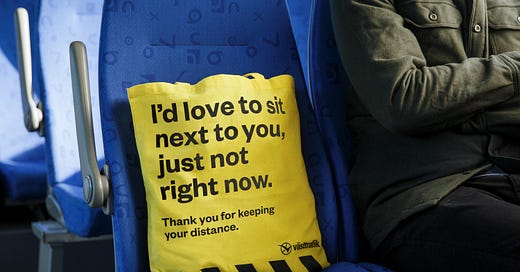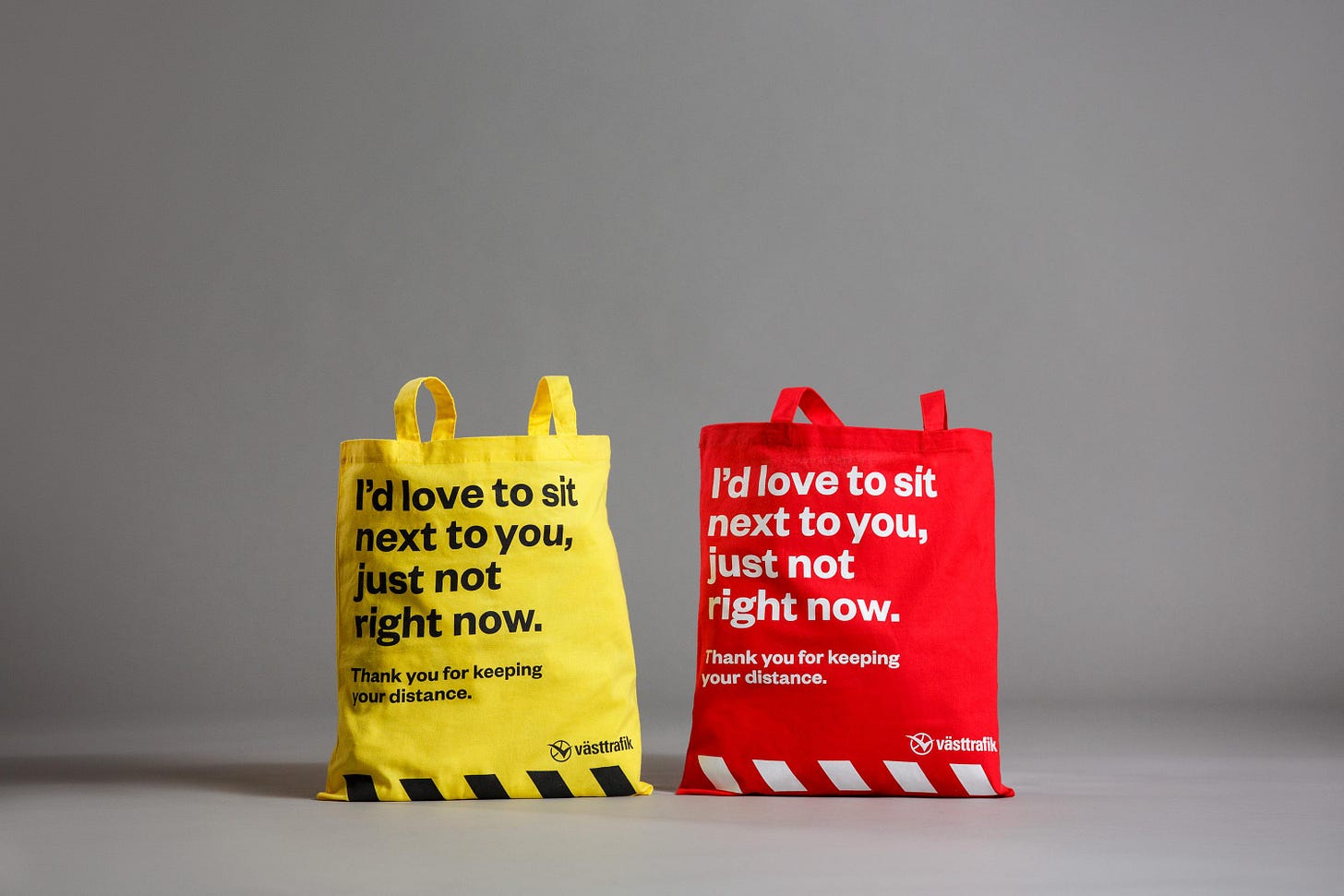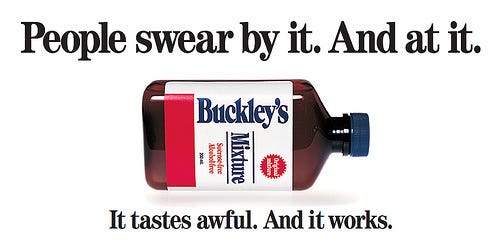Two-sided messages: they sound stupid. And they work
Imagine you run a public transport operator and the World is going through a nasty pandemic.
What would you do to keep travelers safe in spaces where ventilation is limited?
Västtrafik is a public transport operator in Western Sweden and they had to deal with this dilemma in 2020.
Every day, over 400 000 people travel with their buses, boats, trains and trams.
But because of the COVID-19 pandemic Västtrafik realized that they had to do something to promote social distancing.
So they asked ad agency Forsman & Bodenfors to help come up with a solution.
Forsman & Bodenfors then uncovered a fascinating insight.
People on a crowded train or bus would often take up an extra seat with their bags while others stand.
This happened a lot during pre-pandemic times.
This was classic douchebag behavior. But now that we're in the middle of a global pandemic, if you do this it's actually an act of care.
So they came up with a simple yet "Holy shit, that's brilliant" solution: a campaign called "No Douche Bags".
The “No Douche bag” is a tote bag that comes in bright yellow and red with a stripped pattern that looks like barricade tape.
So Västtrafik hands out 1,000 free tote bags to remind travelers to keep their distance.
I'm telling you about this campaign because it uses a classic persuasion trick: two-sided messages.
Most marketers are scared of admitting the flaws of their products. In theory this makes sense. After all, they're trying to persuade consumers to buy something. So why would they mention the negatives? It sounds stupid.
But surprise, surprise. Research shows that it's more persuasive to present positive and negative information (Rucker, Petty, & Brinol, 2008). Because it makes people perceive your message as more credible and rational.
Takeaways for your business:
1. Two-sided messages also help your brand take advantage of the spotlight effect. Remember that people tend to focus on the information in front of them and ignore all the information you don't mention. So by writing about some of the flaws or negatives of your products, your readers will assume that those negatives are the only negatives. And this is an opportunity for you to shape their perception.
That's why presenting a two-sided argument like,"I'd love to sit next to you, just not right now. Thank you for keeping your social distancing" is a master persuasion move.
2. Two-sided advertising messages are generally more credible than one-sided messages. Why? Because you're presenting both sides of an argument. And because you acknowledge your brand has flaws. Remember what I told you about the Pratfall effect? When you admit your flaws people tend to like you more. Because it makes you more human.
3. Here's another great example of how a brand can present a two-sided message in a persuasive way: Canadian Cough syrup brand Buckley's advertising "It tastes awful. And it works.”
Your pal,
Miguel Ferreira
Founder & Chief Copywriter, Teardwn + Nishi + Copy Ipsum + Chill Music Club
(Ramp up the selling power of your website words. Work with me).
You’re on the free list for Creative Samba. For the full experience, become a paying subscriber. My paid newsletter is packed with actionable insights about copywriting, marketing and how the human mind works. So you can learn how to think & write more creatively — like Pro copywriters do.






